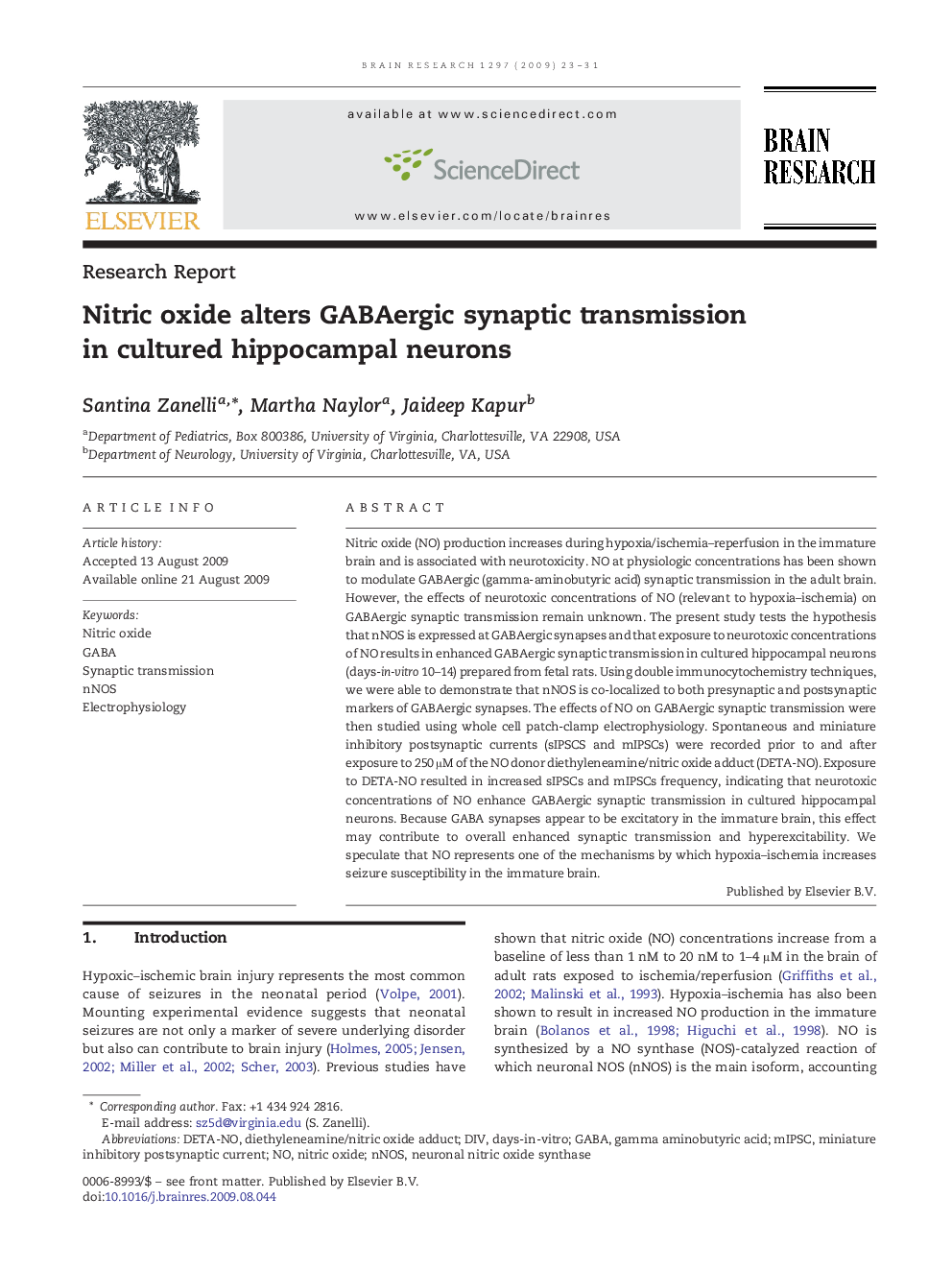| Article ID | Journal | Published Year | Pages | File Type |
|---|---|---|---|---|
| 4327798 | Brain Research | 2009 | 9 Pages |
Nitric oxide (NO) production increases during hypoxia/ischemia–reperfusion in the immature brain and is associated with neurotoxicity. NO at physiologic concentrations has been shown to modulate GABAergic (gamma-aminobutyric acid) synaptic transmission in the adult brain. However, the effects of neurotoxic concentrations of NO (relevant to hypoxia–ischemia) on GABAergic synaptic transmission remain unknown. The present study tests the hypothesis that nNOS is expressed at GABAergic synapses and that exposure to neurotoxic concentrations of NO results in enhanced GABAergic synaptic transmission in cultured hippocampal neurons (days-in-vitro 10–14) prepared from fetal rats. Using double immunocytochemistry techniques, we were able to demonstrate that nNOS is co-localized to both presynaptic and postsynaptic markers of GABAergic synapses. The effects of NO on GABAergic synaptic transmission were then studied using whole cell patch-clamp electrophysiology. Spontaneous and miniature inhibitory postsynaptic currents (sIPSCS and mIPSCs) were recorded prior to and after exposure to 250 μM of the NO donor diethyleneamine/nitric oxide adduct (DETA-NO). Exposure to DETA-NO resulted in increased sIPSCs and mIPSCs frequency, indicating that neurotoxic concentrations of NO enhance GABAergic synaptic transmission in cultured hippocampal neurons. Because GABA synapses appear to be excitatory in the immature brain, this effect may contribute to overall enhanced synaptic transmission and hyperexcitability. We speculate that NO represents one of the mechanisms by which hypoxia–ischemia increases seizure susceptibility in the immature brain.
